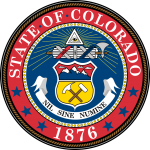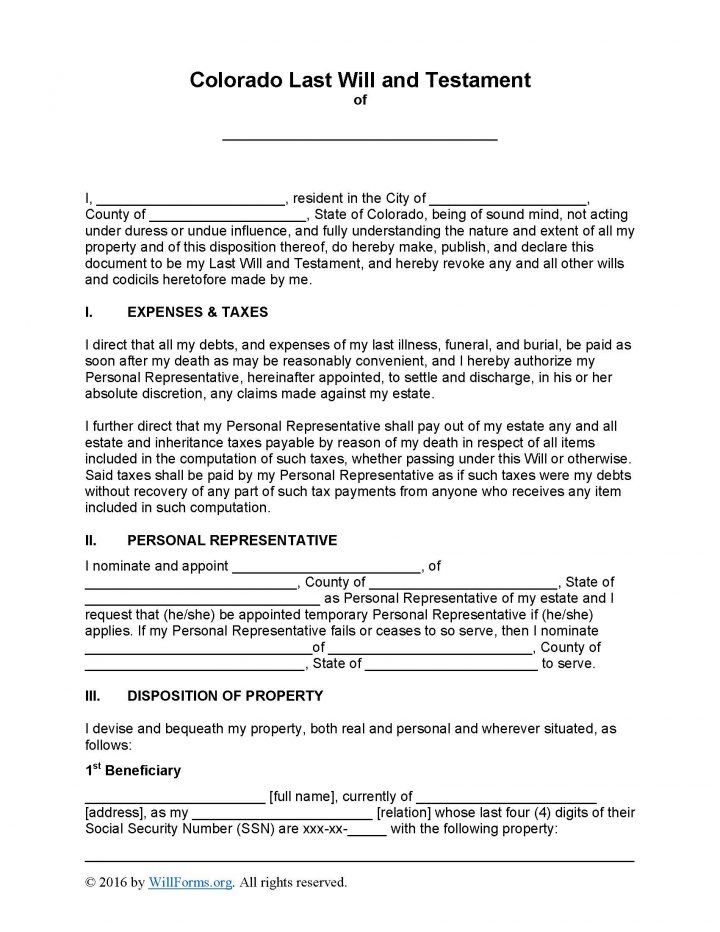
|
Colorado Last Will and Testament Form |
The Colorado last will and testament is a legal document to be is prepared by the Testator (owner of the will) an attorney or representative of the Principal, that would clearly state exactly how the Principal would choose to have their estate (real property and personal property) distributed after their death, The document will direct an executor, appointed by the Principal as to how the estate would be distributed so that the wishes of the Testator will be honored as written.
The document must be witnessed and signed by two witnesses OR acknowledged by a notary public. All signatories must be present before the notary or witnesses in order for the document to be effective in the state of Colorado.
Laws – § 15-1-802(5)
How to Write
Step 1 – Establish ownership of the document by submitting the full name of the Testator
- In the paragraph following, the Testator must provide:
- Principal’s name
- City of residence
- County
- Review the remainder of the section
- Read titled section “Expenses and Taxes”
Step 2 – Personal Representative – The Principal may appoint a personal representative/executor by providing the following information
- Line 1 – Enter the name of the initial appointed executor
- Address
- County of residence
- State
Should the initial appointed executor become unable or unwilling to serve in this capacity, an alternate may be appointed in advance by submitting the following:
- The name of the aleternate appointee
- Their address
- Alternate’s county of residence
- State
Step 3 – Disposition of Property –Enter all required beneficiary information. If there are more than three beneficiaries, add a continuation sheet with all of the same information, sign the added sheet and attack to the document:
- Full name of eachbeneficiary
- Current address
- Relationship to Testator
- Submit the last four (4) digits of the beneficiary’s Social Security Number (SSN)
- The Principal must carefully review the next paragraphs
- If additional instructions would apply,the Principal may add them on a separate sheet,
Step 4 – Titled Sections and all Subsections- The Testator must review the following:
- Omissions
- Bond
- Discretionary Powers of Personal Representative (subsections A – K)
- Contesting Beneficiary
- Guardian Ad Litem Not Required
- Gender
- Assignment
- Governing Law
Step 5 – Binding Agreement – The Principal must read and agree to the first paragraph then enter the following information into the second paragraph:
- Testator’s name
- Provide the date of the exectution of the document in dd/m/yy format
- Testator’s name
- Printed name
- Enter the date of the signature in dd/m/yy format
- Testator’s name
Step 6 – Witness Signatures and Notary Public – All signing parties must be present before a notary public for witnessing of signatures
Witnesses –
- Each witness must provide their signatures
- Complete current addresses
Testamentary Affidavit –
- Through this section, the notary shall acknowledge this document after completion
- The notary shall enter the names of the parties
- The Testator must enter their signature
- Witnesses must enter their signatures

